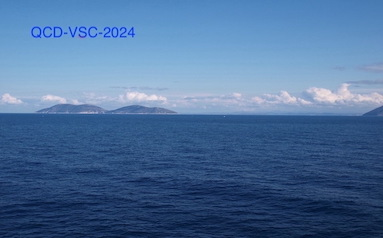Speaker
Description
I will demonstrate the generation of gravitational caustics in a self-gravitating N-body system. The gravitational caustics are space regions where the density of particles is higher than the average density in the surrounding space. It is suggested that the intrinsic mechanism of caustics generation is responsible for the formation of the cosmological Large Scale Structure that consists of matter concentrations in the form of galaxies, galactic clusters, filaments, and vast regions devoid of galaxies.
In our approach the dynamics of a self-gravitating N-body system is formulated in terms of a geodesic flow on a curved Riemannian manifold of dimension 3N equipped by the Maupertuis's metric. We investigate the sign of the sectional curvatures that defines the stability of geodesic trajectories in different parts of the phase space. The regions of negative sectional curvatures are responsible for the exponential instability of geodesic trajectories, deterministic chaos and relaxation phenomena of globular clusters and galaxies, while the regions of positive sectional curvatures are responsible for the gravitational geodesic focusing and generation of caustics. By solving the Jacobi and the Raychaudhuri equations we estimated the characteristic time scale of generation of gravitational caustics, calculated the density contrast on the caustics and compared it with the density contrasts generated by the Jeans-Bonnor-Lifshitz-Khalatnikov gravitational instability and that of the spherical top-hat model of Gunn and Gott.
